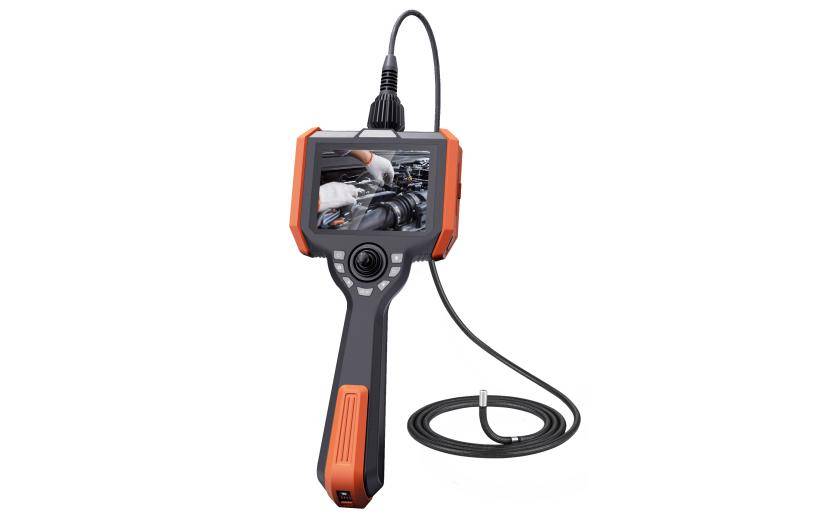Want to know more?
Don't miss any product updates on our industrial borescopes

Industrial borescope
solution service provider
Company Address
Office : 18F, Pingshanshouzuo, Pingshan District, Shenzhen,Guangdong
Contact Info
Ph: +86-0755-89588241

Industrial endoscopes generally adopt megapixel level rather than pursuing higher pixels. This is the result of multiple factors such as technical characteristics, application scenarios, cost-effectiveness and industry standards. The following is a detailed analysis from a professional perspective:

Practicality of narrow space detection
The core application scenario of industrial endoscopes is to enter narrow or hard-to-reach areas such as engine combustion chambers, pipelines, and pressure vessels. The image requirements for these scenarios are not "ultimate high definition", but more focused on:
Clarity and detail restoration: can accurately identify defects such as cracks, corrosion, and wear;
Color and contrast: maintain image authenticity in dark light or metal reflective environments;
Dynamic range: capture bright areas and shadow details at the same time.
Megapixel sensors (such as 440,000 native pixels, resolution 752×576) can already meet these requirements. Too high pixels may increase data redundancy and reduce real-time detection efficiency.
Limitations of the optical system
The diameter of the endoscope probe is usually 6-8.5mm, and it needs to integrate components such as lenses, sensors, and light sources. High-pixel sensors require larger photosensitive elements, but in a small space:
Lens distortion control: Small-diameter lenses are prone to distortion and need to be optimized through optical design (such as aspherical lenses) rather than simply increasing pixels;
Depth of field and field of view: Industrial inspection requires a balance between wide-angle vision and long-distance clarity, and megapixel sensors perform better in balancing these two aspects.
Hardware cost
High-pixel sensors (such as 4K, 8K) are expensive and require higher-performance image processors, storage media and transmission bandwidth. As a detection tool, industrial endoscopes need to control costs to adapt to large-scale applications:
Basic model: using megapixel sensors, low cost, suitable for daily maintenance and inspection;
High-end model: although it can be equipped with higher pixels (such as 2MP-5MP), the price is significantly increased and is only used in precision inspection scenarios.
Maintenance and durability
Industrial endoscopes often need to work in high temperature, high pressure, and high radiation environments. High-pixel devices may cause reduced stability due to problems such as sensor overheating and circuit interference, while megapixel devices have better reliability under harsh working conditions.
Requirements of national standards
Domestic standards (such as GB/T 33886-2017) have clear provisions for the detection parameters of industrial endoscopes:
Resolution: must meet specific line pairs/mm requirements, but does not mandate ultra-high pixels;
Illumination, field of view, depth of field: these parameters have a more direct impact on the detection effect.
The standard focuses more on the comprehensive performance of the equipment rather than a single pixel indicator.
Differentiation of industry applications
Different fields have different requirements for pixels:
Aerospace: Need to detect tiny cracks in turbine blades, high-end equipment may be used;
Automobile manufacturing: Daily inspection of welds and coating quality, megapixels are sufficient;
Energy and power: Check the inside of boilers and pipelines, pay more attention to the real-time transmission and stability of images.
Stability in harsh environments
Industrial endoscopes need to adapt to the temperature range of -20℃ to 100℃, high humidity, oil pollution and other environments. Megapixel devices perform better in the following aspects:
Radiation resistance: The sensor has stronger radiation resistance;
Waterproof and dustproof: The protection level of the whole machine can reach IP65, ensuring long-term stable operation.
High-pixel devices may cause transmission delays due to excessive data volume, affecting real-time detection. Megapixel devices can quickly process and store images while ensuring clarity, improving detection efficiency.
Cost-effectiveness of large-scale applications
The industrial inspection field is cost-sensitive, and megapixel devices achieve the best balance between price and performance:
Purchase cost: much lower than high-end equipment;
Maintenance cost: simple structure, low failure rate, and convenient maintenance.
Expansion of emerging fields
With the development of new energy and intelligent manufacturing, the application scenarios of industrial endoscopes are constantly expanding. Megapixel devices have outstanding performance in the following fields:
New energy vehicles: detection of the internal structure of the battery pack;
Hydrogen energy: inspection of the inner wall corrosion of the storage tank;
Rail transportation: monitoring the wear of high-speed rail gearboxes.

The megapixel level of industrial endoscopes is the result of the interaction of technology, cost, standards and market demand. This pixel level optimizes the cost-effectiveness while ensuring detection accuracy, environmental adaptability and ease of operation. In the future, with the advancement of sensor technology and image processing algorithms, the pixel level of industrial endoscopes may gradually increase, but megapixels will still be the core configuration of mainstream applications.

Industrial borescope
solution service provider